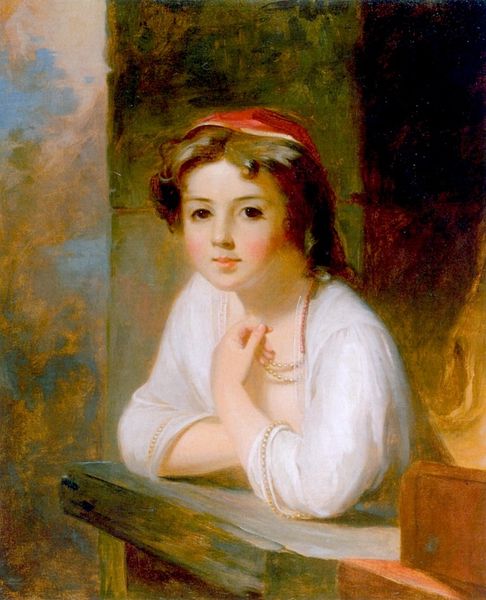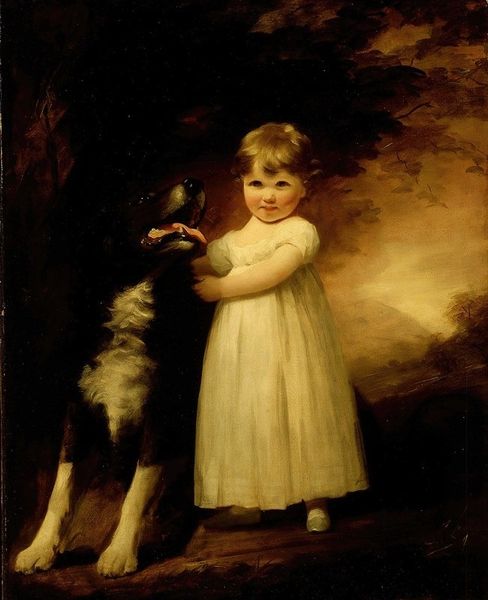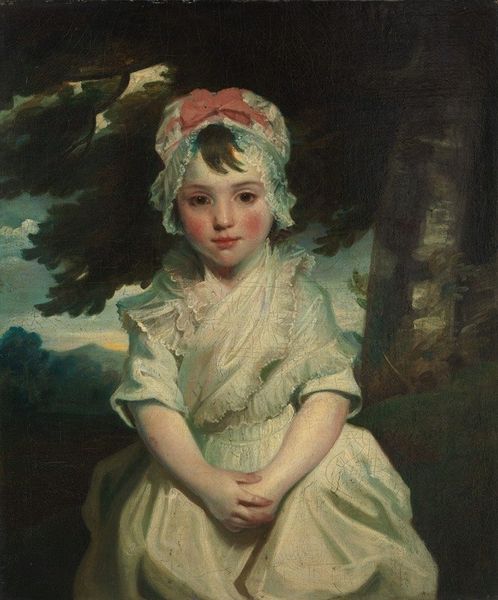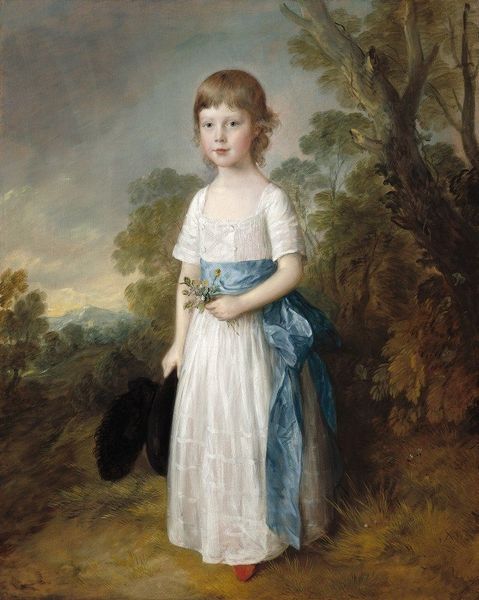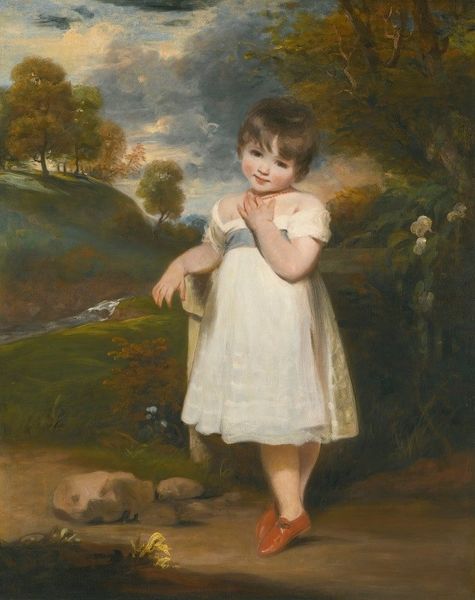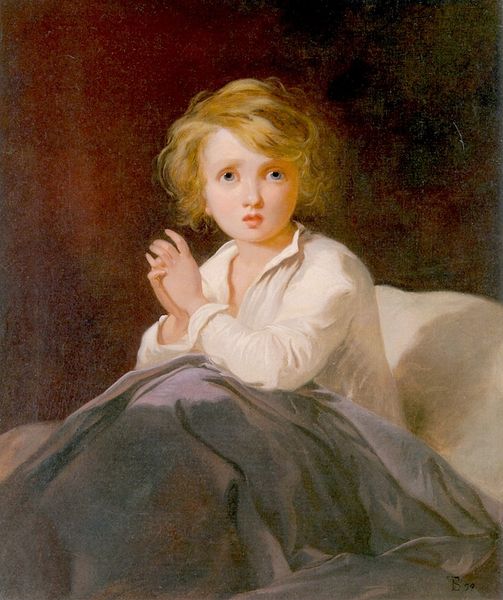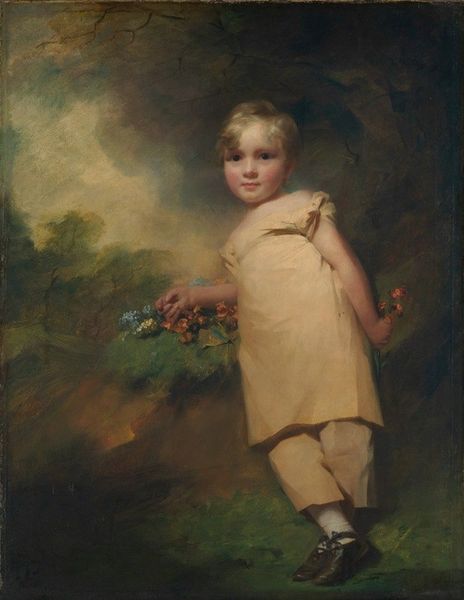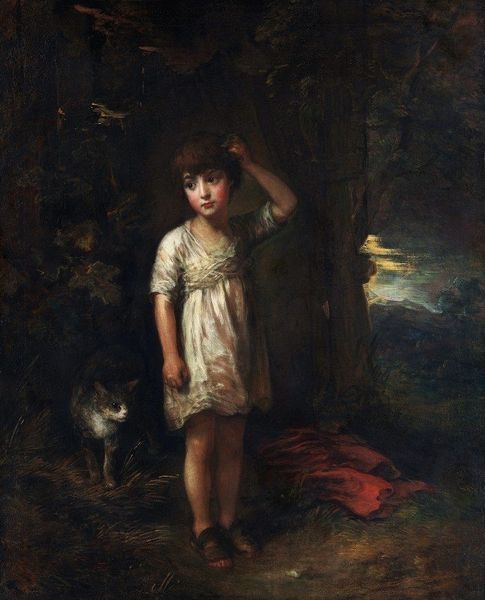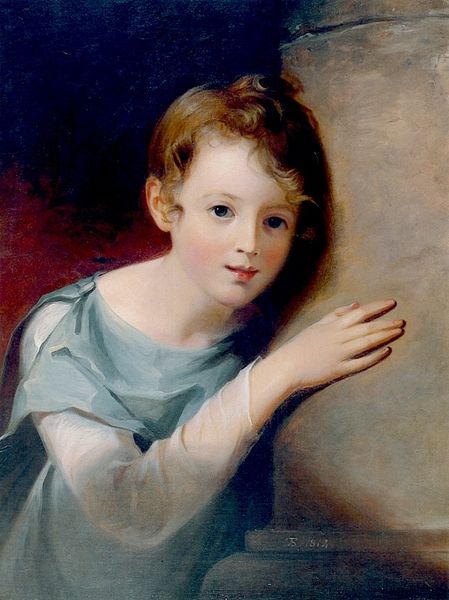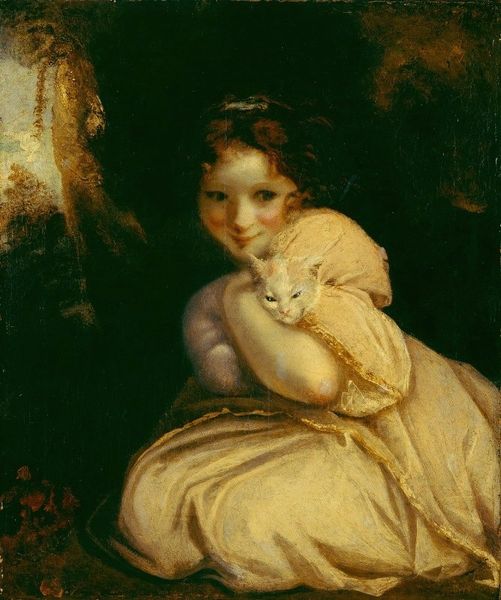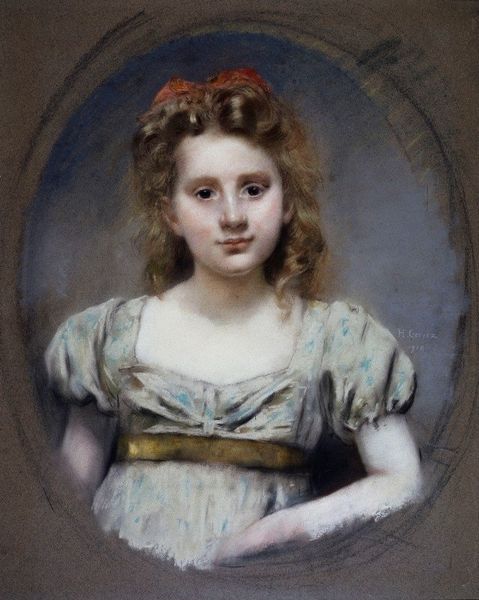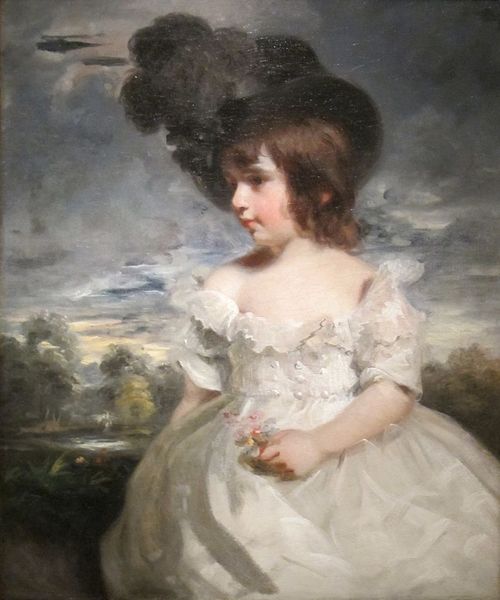
painting, oil-paint
#
portrait
#
narrative-art
#
painting
#
oil-paint
#
landscape
#
figuration
#
oil painting
#
romanticism
#
genre-painting
#
academic-art
#
lady
#
fine art portrait
Copyright: Public domain
Curator: It's hard to believe this serene image is connected to such a frightening tale. This is Thomas Sully’s “Sarah Esther Hindman as Little Red Riding Hood,” painted in 1833, using oil on canvas. Editor: It has a sort of staged innocence about it. The red cape pops, of course, but it’s the texture of that rock, the way the paint is laid so thickly, that really grabs me. I wonder where that stone came from. Was it brought in specially for the portrait? Curator: Well, Sully often infused his portraits with allegorical elements. Red Riding Hood, in her most familiar symbolic guise, treads the perilous path between innocence and the loss of innocence, doesn't she? Editor: Sure, but thinking materially, that cloak, that dress… They're incredibly important signifiers. The fineness of the fabrics would have been understood, consciously or not, as symbols of class and status. That detail speaks volumes. The red cloak would’ve held tremendous color-fastness, which means longer dye and labor-intensive mordanting. Curator: Yes! Red holds an intense semiotic weight – danger, passion, transgression… Think of the long cultural history from ancient rituals to its present use. Sully deftly layers those associations with the seemingly innocent image of a child. The way she grips the basket, perhaps more tightly than she needs to, betrays the underlying tension. The viewer knows what she is facing. Editor: I suppose it’s knowing who paid for the picture – the socio-economic conditions that allowed for that display of status that fascinates me. The labor conditions and exploitation involved in obtaining materials… Curator: It is impossible to detach this image from its cultural implications. It is part of a continuum. She is almost too aware. The archetype she represents and the story she tells, the layers, the way this is translated in paint– it continues to echo. Editor: All true, yet someone, likely many someone's, worked long hours for Sully to receive a fair amount of materials with which he constructed the final artwork. So there is more than just myth-making going on, and acknowledging is essential to thinking responsibly about its presence in a museum collection like ours. Curator: A darker interpretation than Sully likely intended. Editor: Perhaps, yet I believe, in exploring its manufacture, its cultural purpose as something produced and consumed in 1833, the Red Riding Hood’s red has far greater, and more profound implications for the world.
Comments
No comments
Be the first to comment and join the conversation on the ultimate creative platform.

